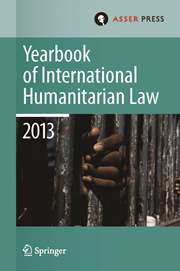Article contents
Poison, Gas and Expanding Bullets: The Extension of the List of Prohibited Weapons at the Review Conference of the International Criminal Court in Kampala
Published online by Cambridge University Press: 15 August 2011
Extract
Responses to the recent extension of the list of prohibited weapons at the Review Conference of the International Criminal Court (ICC) in Kampala, Uganda have been rather mixed. Some have hailed the amendments to Article 8 of the Rome Statute as a milestone development. Others speak of a blatant manifestation of the Rome Statute's inability to deal with prohibited weapons in a meaningful and up-to-date manner. Certainly, the list of prohibited weapons has been extended in Kampala. But as constructed, does it adequately capture the realities of contemporary armed conflicts? In the pursuance of this question, in a first step, this contribution focuses on what actually happened in Kampala and why it had not already happened in Rome in 1998. In a second step, some light will be shed on what did not happen in Kampala. As is well known, initial proposals for the extension of the list of prohibited weapons had been far more extensive than the list that was ultimately adopted. Thirdly, in a final step this Comment concludes with an assessment of whether the Rome Statute's list of prohibited weapons in its amended form now better corresponds to the realities of contemporary armed conflicts.
- Type
- Current Developments
- Information
- Copyright
- Copyright © T.M.C. Asser Instituut and the Authors 2010
- 3
- Cited by


